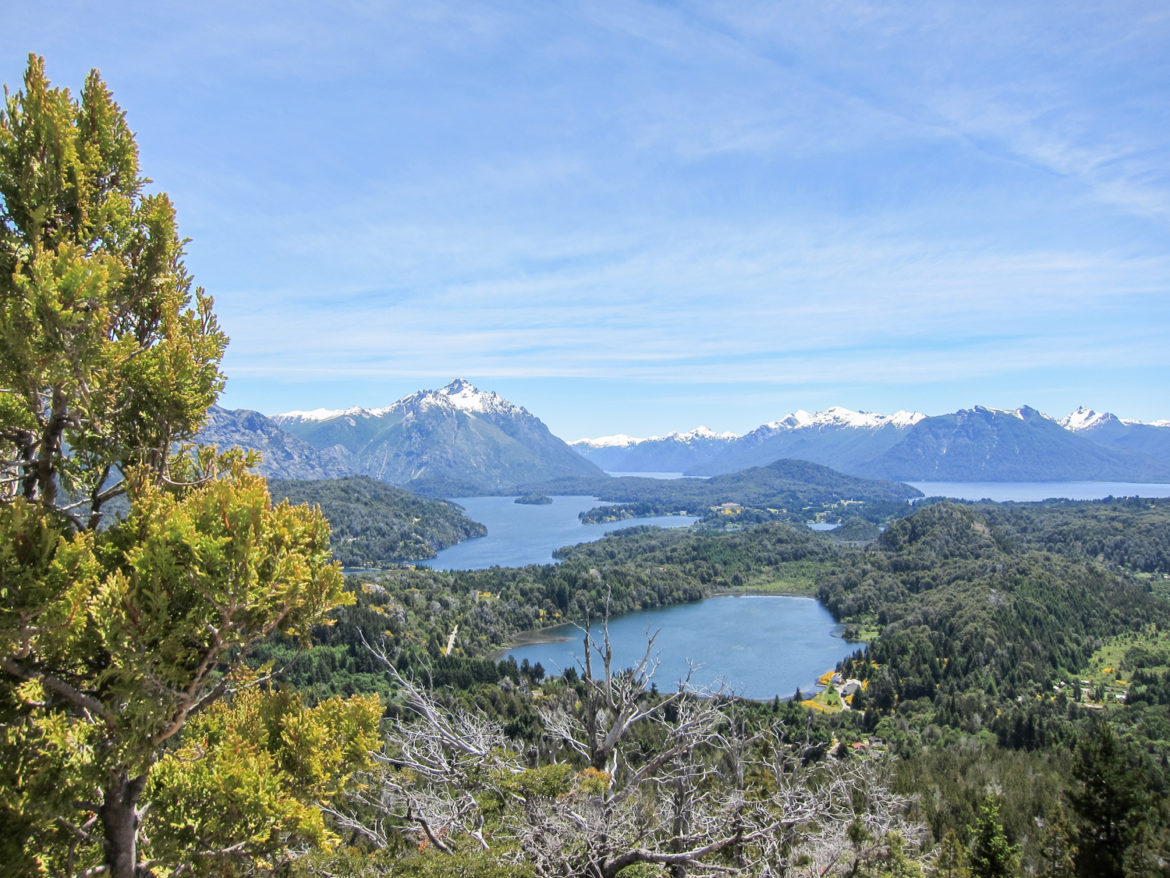The Lake District is part of northern Patagonia, a region known for stunning glacial lakes, mountain ranges and alpine forests.
From Pucon, Chile, we took a bus for a couple of hours to reach the Argentine border. Once through passport control, we stopped in San Martin de Los Andes, a smaller, chic version of Bariloche (as it’s more commonly referred to); changed buses and continued on for another hour or so.
Sadly, torrential rain put a damper on our trip along the Seven Lakes Route, one of South America’s most scenic drives. For nearly 70 miles along RN234, it winds through a stunning landscape of sparkling lakes, dense forests and cascading waterfalls. But for us, all we could see was grey skies and lots and lots of rain.
Thankfully, other than sporadic snow one afternoon, we enjoyed beautiful weather for most of our stay.
Bariloche is a charming mountain village with a Swiss feel. As the region’s main transport hub, people from all over come to enjoy the wealth of year-round outdoor activities. From hiking to skiing, there’s plenty of ways to enjoy the natural beauty. Best of all, you can enjoy samples from the many chocolate boutiques along Bartolomé Mitre Avenue. Or some refreshing Argentinian beer.
The Centro Civico is the town’s main plaza featuring a Swiss-style town hall and a graffiti-covered statue of General Julio Roca. Apparently, protests happen frequently here with people often taking a stand against corruption in the government. From an outside perspective, it’s interesting to see visible signs of political turmoil. While the defacing of a lovely plaza is unfortunate, people clearly feel this is the only way they’ll be heard. The fact that it hasn’t been rectified for several years says a lot.
An opportunistic resident walked around the square offering photo ops with her St. Bernard dogs (including a few puppies). Each sported an iconic barrel of brandy around their neck, an image that originally became popular through old live action comedies such as (ironically) a show called “Swiss Miss.”
Later, we strolled down to the Cathedral of Our Lady of Nahuel Huapi, located along the crystal-clear glacial lake of the same name. In Mapuche (the language of Patagonia’s indigenous people), Nahuel Huapi means “Island of the Jaguar.” While no jaguars are around, plenty of seagulls have made the lake home – an interesting phenomenon given the area’s high altitude and distance from the ocean.
One day, we headed to nearby Colonia Suisa (“Swiss Colony”) to check out the region’s first European settlement.
Our hour long bus ride gave us a glimpse into what our rain-soaked Seven Lakes Route might have been like under sunny skies. Bright yellow scotch broom flowers lined the highway against a backdrop of towering alpine trees. The natural beauty was a stark contrast to the contrived feel of Colonia Suisa. While the little village may appeal to some, to us, it seemed like the epicenter of tacky tourist treats and trinkets. We grabbed an underwhelming apple strudel and bided our time for a few hours, strolling past tea houses and craft shops, before heading back to town.
Fortunately, we always enjoyed returning to our cozy, cabin-like guesthouse, La Justina. The caretakers, Agustina and Lucia, were especially warm and friendly. The laidback, communal atmosphere made it easy to talk with other guests. There were quite a few European students who had come from a study abroad program in Buenos Aires. Even though we were all from different places, the familial vibe and rustic surroundings made it feel like a very local experience.
Probably one of our favorite memories with actual locals was dining at La Fonda del Tio, a humble eatery serving classic fare in a simple, homey ambience. Despite being the only non-Argentinians, we felt welcome the moment we walked in. Savoring a perfectly cooked Cordero Patagnoico (homemade lamb dish), along with a bottle of Argentine house wine, we took in the incredible view of Nahuel Huapi Lake below.
More extraordinary lake views awaited us when we hiked up Mount Campanario.
Travel guides have said the summit here offers some of the best views in the world. In lieu of the seven-minute chairlift ride, we made the short, steep climb up to the top. A half hour later, we stood at the top, looking out on unbelievable panoramic views of the Lake District. Snow-capped mountains. Lush, green forests. And brilliantly blue waters as far as the eye could see.
We stayed for a while, breathing in the fresh mountain air and taking in the views from different vantage points. Eventually, we made our descent and headed to Berlina Tap Room for a post-hike refreshment. The gloomy rain from our initial arrival was now a distant memory. Sitting outside on the brewery’s deck in the middle of an alpine forest with a cold beer in hand. Now that’s the way to experience the natural beauty of Bariloche.

